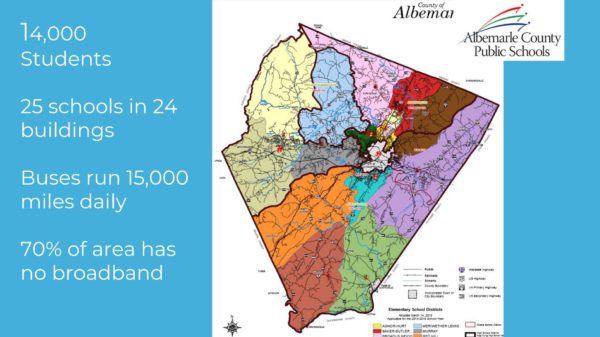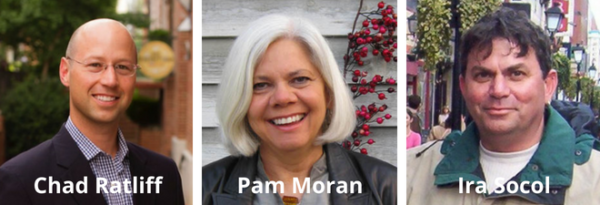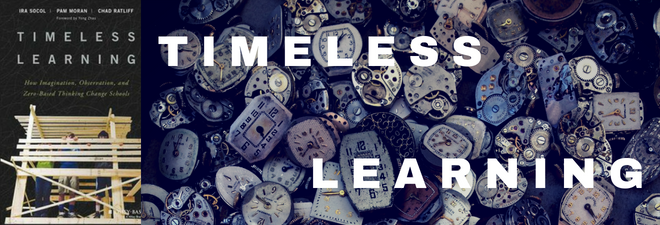 I like the title of this book about how to do school right: Timeless Learning. The launch date is August 7th but from what is available – and from the published work of the authors on which it’s based – you just know it’s going to be good. Very good.
I like the title of this book about how to do school right: Timeless Learning. The launch date is August 7th but from what is available – and from the published work of the authors on which it’s based – you just know it’s going to be good. Very good.
The focus is on modern learning, innovative practices, change leadership and how to incorporate new technologies but – as the authors make abundantly clear – there is nothing new about the skills or even the philosophy behind the practice. In fact, it could be argued that John Amos Comenius said it all in the 17th century. That’s the timeless part.
But the world has changed and in order to help children thrive in the world of now and the foreseeable future schools need to do some urgent thinking about what needs to happen. This book will help them do exactly that.
It all starts with trust in learners – all learners – and in their curiosity, imagination and capacity to learn.
To start – look at the cover photo. It’s middle school children who decided they wanted to build tree houses in the cafeteria. How dangerous! What were the grown-ups thinking! What if someone fell off? Or hammered a thumb instead of a nail? And just think of the splinters, the lawsuits! You can learn more about projects like that (as well as the safety and code issues) in the book where the adults concerned took a “let’s help make this happen” rather than a “no way” approach to the children’s ideas.
This book by three leaders is about how a whole school system can change once you figure out that the first focus must be on how children learn, play, grow and develop and once there’s a commitment to equity, access, inclusion and pathways for success for every child.
The authors tell of their own journey of schooling reminding us of just how important it is to untangle our personal stories and examine the assumptions that we bring to the work of educating other people’s children.
This is not a cook-book of handed down recipes for what to do, but it is a resource for the mental tools needed to make the kinds of philosophical and practical shifts that learners need. And it does show how they can be put into practice. It starts with the why.
They lay out a compelling case for change with the now familiar story of the traditional school system that was efficiently designed to sort and fail children. With a commitment to equity, access and inclusion they find the ways to shift the systems and structures that block learning for too many children. This book is the story of how they did it.
The strength of the book is in the direct simple and personal approach. The theory is there – embedded in the values that drive the thinking and the practical wisdom.
From what I have read so far the book reads like a conversation, a good rich and multi-layered conversation that provides an invitation to engage with ideas, explore possibilities and then act to make a difference. It’s an invitation to engage, to find your own footing , connect with others and act to make a difference on behalf of children.
The authors structure ways to question assumptions and accepted norms of schooling. What does learning look like? How can we tap into and celebrate children’s strengths so that they may leverage them for success? Why do we persist in giving homework to elementary school children contrary to all the research and the evidence in front of us? What about that age-batched, conveyor belt of schooling by date of birth? Who has all the power and authority and how can that be upended? And all the rest of the normal, usual, routine, common, accepted, too-often unexamined malpractices of schooling.
School – the authors suggest – can be a joyful place of learning for both students and teachers and a great preparation for that VUCA (volatile, uncertain, complex and ambiguous) future. When the choice that may face schools is adapt or die – this is a useful primer on how we got here, what is wrong and what schools need to do to serve the needs of their students and get it right. The rightness in this case is providing educational opportunity, access and pathways for success for every child.
Timeless Learning allows us to imagine our way through a What if? scenario of designing school from scratch. What would we do differently? How do we shift power and authority to allow change? How do we align systems and structures, policies and practices with a learning focussed mindset of equity, access and inclusion?
I appreciated the comments on strategic planning and the importance of not letting the plan get in the way of progress. After all a good strategic planning process lays the groundwork – tills the soil – so that when the unexpected opportunity or new idea arises you know what to do. Picasso put it this way:
La inspiración existe, pero tiene que encontrarte trabajando.*
Inspiration exists, but it has to find you working.
Timeless Learning is the story of how committed educators transformed the educational landscape in Albermarle county, Virginia. It takes the reader beyond the slogans and the rhetoric into the real world of classrooms and teachers. This slide is from one of Pam’s presentations and gives a sense of the scope of the work.

The publication date for Timeless Learning is August 7th. I’m looking forward to getting my copy.

Just as an aside:

If you ever need evidence of the eternal death grip of traditional education on the psyche look no further than stock classroom pics that will accompany the rash of back-to-school articles, ads, features and posts starting in August. They will undoubtedly be filled with apples, piles of books and images children aligned in desks and frantically waving their hands at the teacher in order to perform the right answer.
It’s a model that privileges teacher talk, teacher-driven questioning and a world of right or wrong reproducible responses. In this world children compete for attention, grades and the opportunity to speak. It is not repeat not a world where much actual learning will take place in spite of the earnest looks of delight on the children’s faces and the benign appearance of the teacher at the front.
Ironically, the publishers of Timeless Learning used just this picture as the header for their list of new books for August 2018 in the Humanities and Social Sciences section. Luckily for Timeless Learning it’s listed under Business in the Leadership and Management section!

*In: Tomás R. Villasante (1994), Las ciudades hablan: identidades y movimientos sociales en seis metrópolis latinoamericanas. p. 264.
The feature photo includes an adaptation of a photo by Heather Zabriskie on Unsplash.

